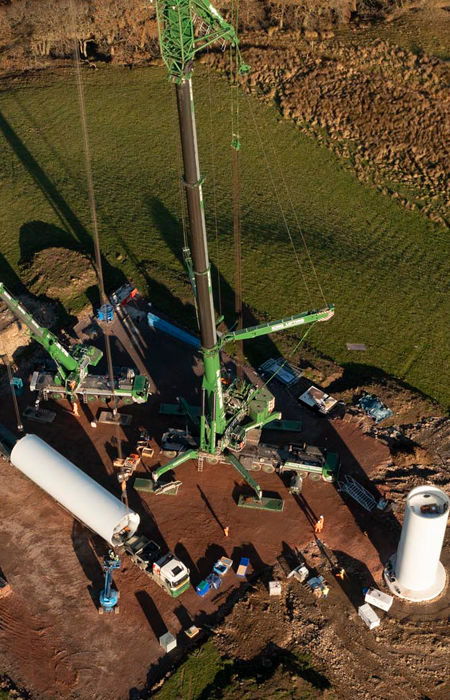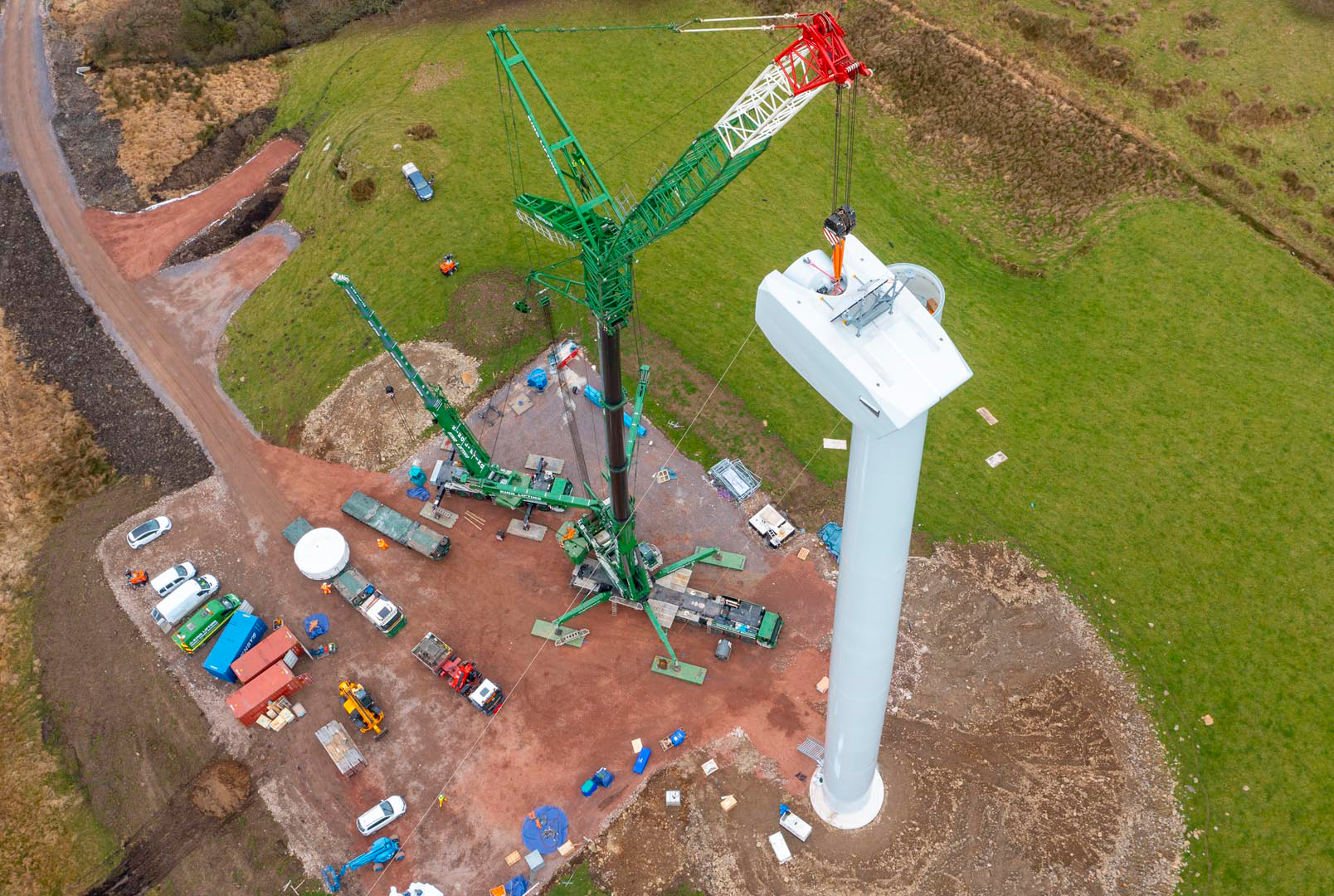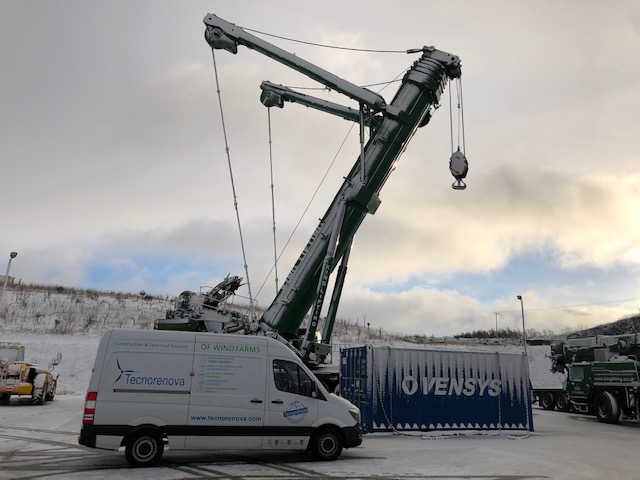Lifting and transport of wind turbines
We guarantee that the components are delivered to the customer within schedule and in optimal condition. We have international strategic partners who provide us with specific high-tonnage cranes for the wind sector.
Some related jobs:
The challenge of transporting wind turbines
The transport of wind turbines is a complex and delicate task This equipment, essential in order to generate wind energy, is made up of huge and heavy structures, such as the towers, the nacelles and the blades.
Each of these components requires specialized logistics to be shipped from the factory to the installation site. Furthermore, the transport of wind turbines implies facing various challenges, such as the length and weight of the parts, road infrastructure and weather conditions.
Planning and routes
Prior to transportation, it is necessary to carefully plan the route and means of transport to be used. In order to do so, factors such as distance, road and bridge conditions, traffic restrictions, and potential obstacles, have to be considered.
In some cases, routes may require temporary or permanent improvements to ensure the safe passage of vehicles transporting wind turbine parts. Furthermore, a lot of paperwork needs to be done so as to obtain permits from local authorities and to comply with the legal framework of each country.
Transportation of wind turbine blades
Wind turbine blades are one of the most challenging components to be transported due to their size and shape. They can reach more than 50 meters in length and weigh several tons. Transporting wind turbine blades requires special vehicles, such as extendable trailers, which allow the blades to be handled and turned around curves and road intersections.
In addition, some cases may require the use of cranes or even helicopters to lift and move the blades in certain areas.
Tower carriage and nacelle
Transporting the tower and nacelle of a wind turbine may be also very challenging. The tower, which can be more than 100 meters high, is usually transported in sections. Each section is moved in special heavy-duty trailers and, like the hydraulic shovels, may require additional vehicles to help manoeuvring.
Onn the other hand, the nacelle contains the generator, gearbox, and other crucial components of the wind turbine. Its transport requires a vehicle with a suitable platform to support its weight and guarantee its stability during the journey.
Environmental considerations
The transport of wind turbines must also take into account the environment. It is essential to minimize CO2 emissions and other pollutants during the transportation. In order for this task to be achieved, measures such as route optimization, the use of low-emission vehicles and efficient coordination, need to be taken into account.
In addition, it is essential to ensure that the transport of the components does not negatively affect the local fauna and flora. For instance, it is crucial to avoid disturbing natural habitats or causing damage to protected areas during vehicle transit.
The importance of a specialized team
The transportation of wind turbines requires a team of highly trained professionals with extensive experience in logistics and heavy cargo transportation. Drivers, crane operators and other professionals involved must be familiar with the specific characteristics of wind turbine components, as well as the techniques and tools necessary to handle them safely and efficiently.
In addition, it is crucial to have a coordination and supervision team that guarantees the correct execution of every step of the process, from planning to the delivery of the components to the installation site.
Contact us without obligation to obtain information about Tecnorenova’s wind turbine transport and lifting services.
Frequent questions
How are the wind turbines transported?
Wind turbines are transported in parts, such as towers, nacelles and blades, using special heavy-duty vehicles and extendable trailers. Route planning and obtaining permits are essential for safe and efficient transportation. In some cases, cranes or helicopters can be used to overcome obstacles or access difficult areas.
Where should a wind turbine be located?
A wind turbine must be located in areas with constant winds and strong enough to generate wind power. Factors such as wind speed and direction, topography and proximity to electrical infrastructures must be taken into account. Wind turbines can be located on land or in offshore wind farms.
How are wind turbines attached to the sea?
Offshore wind turbines are supported by foundations on the seabed, such as monopiles, jackets or gravity foundations. These structures anchor and stabilize the wind turbine against adverse marine conditions and the forces of wind and waves. In deeper waters, floating wind turbines are used, which are anchored to the seabed using mooring systems.







